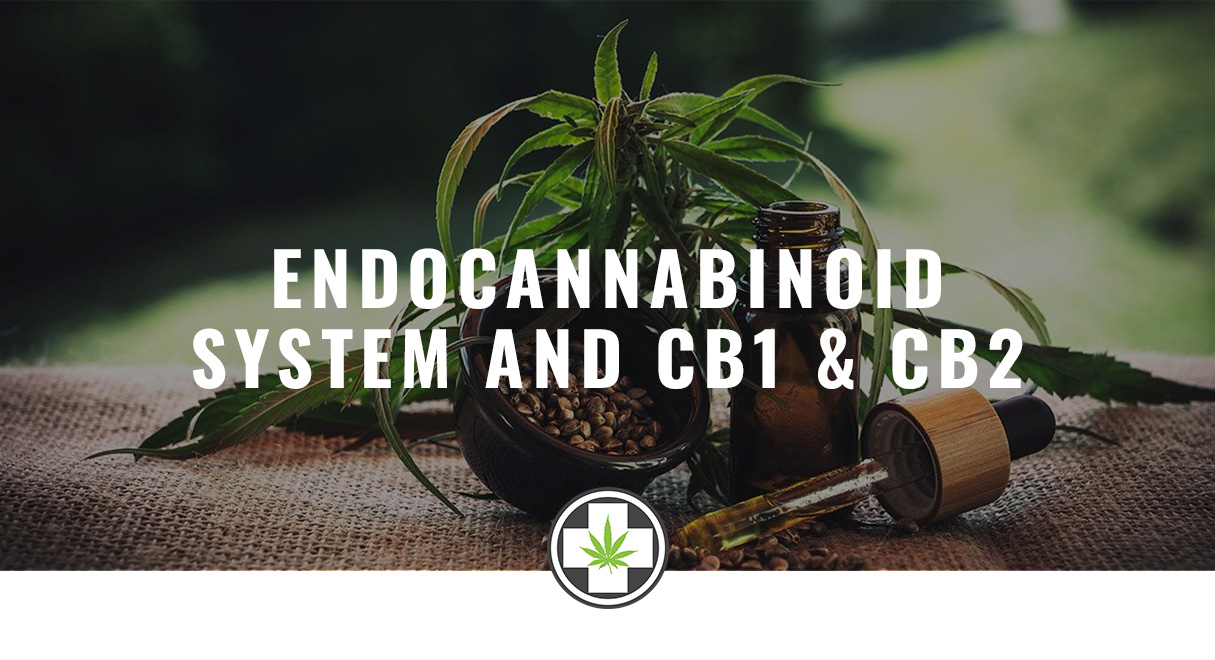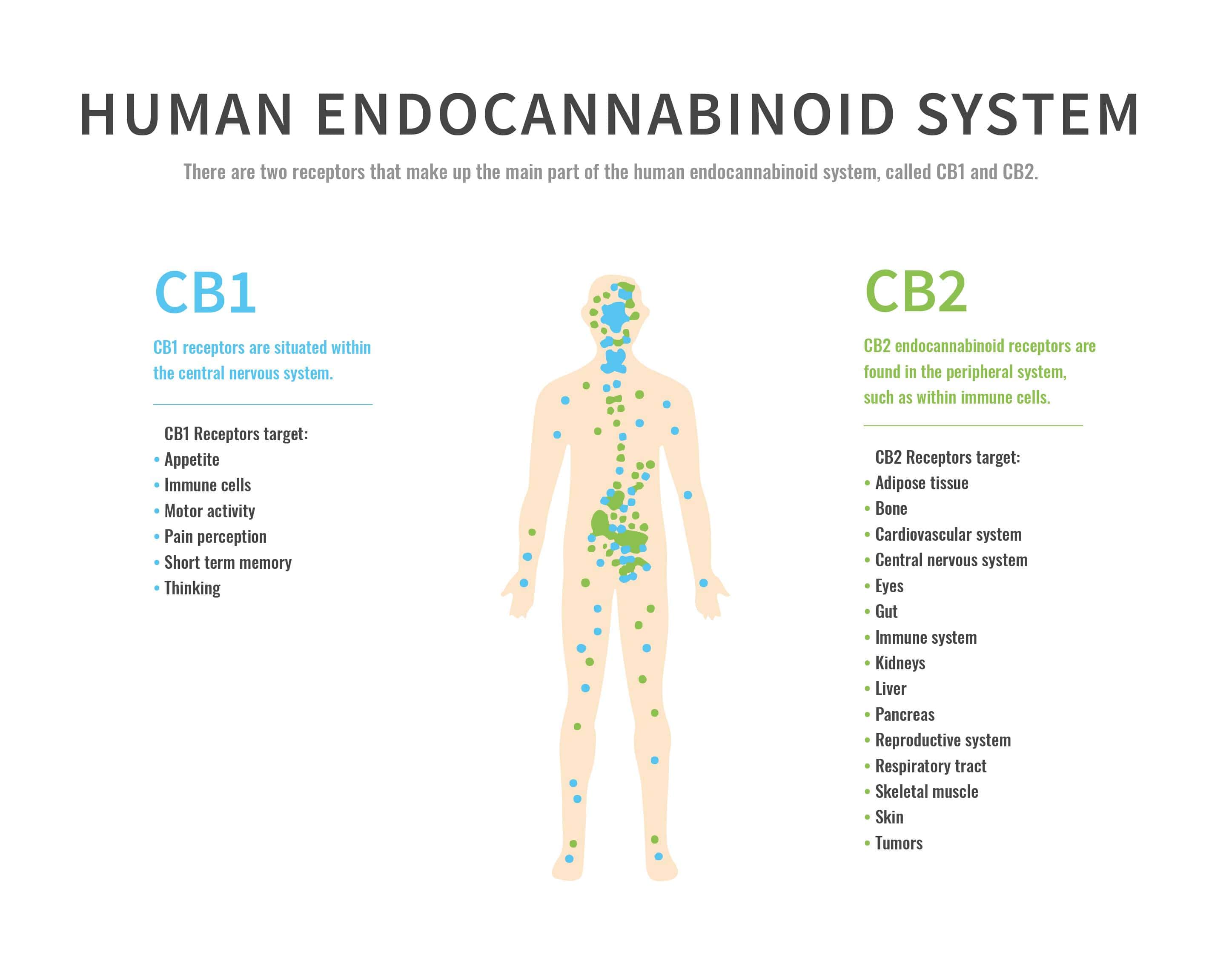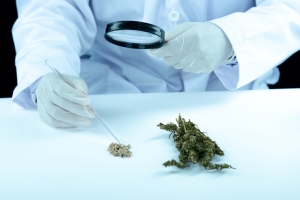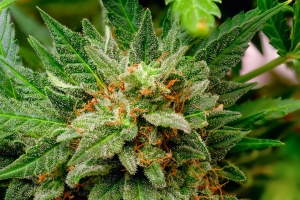Endocannabinoid System and CB1 and CB2 Receptors
In this article, we’re getting scientific about what marijuana does to the body and the brain. Human beings have gone through a strange relationship with cannabis over the years, but it is becoming more accepted in numerous parts of the world, and America has legalized cannabis for recreational use in many states. In Canada, cannabis is legal everywhere. The human endocannabinoid system is the part of the brain that processes most of the effects of cannabis, and this is what we’re explaining below.
What is the Endocannabinoid System?
The endocannabinoid system is sometimes shortened to ECS. It is a complex system within the brain that we’ve only actually known about since the 90s. Whether you take cannabis or not, the endocannabinoid system diagram is the same and exists in each and every human.
What Functions Does the Endocannabinoid System Regulate?
There are still studies being done on the ECS and what it does, but it is known to regulate a lot of human functions such as the appetite (explains the famous “munchies”), memory, reproduction, and sleep, as well as the mood. The human endocannabinoid system is important for everyone, not just those who smoke weed.
Other functions that have been shown in studies to be impacted by the system include cardiovascular system function, muscle growth, stress levels, metabolism, learning…it is clear that we don’t fully understand the ECS, but it is also clear how important it is for everyone.
What Are the Two Main Receptors Within the ECS?
The ECS is made up of endocannabinoid receptors as well as enzymes. There are two receptors that make up the main part of the human endocannabinoid system, called CB1 and CB2. They’re not just found in the brain, they are found within different parts of the body.
Endocannabinoids bind to the endocannabinoid receptors to tell them that action needs to be carried out within the body. An endocannabinoid system diagram can show where the different parts of the body are impacted.
- CB1 receptors are situated within the central nervous system.
- CB2 endocannabinoid receptors are found in the peripheral system, such as within immune cells.
The endocannabinoids binding to these different receptors influence different areas. A CB1 receptor within a nerve somewhere in the body might be able to heal pain or inflammation in a certain part of the body.
Deficiencies in the Endocannabinoid System
There is a theory that endocannabinoid deficiency in your body can cause certain different conditions to spring up or develop. There as been a lot of research on conditions like Fibromyalgia and IBS as well as people who are susceptible to migraines.
If this theory is true (as a lot of evidence would suggest) then it is possible that it could be treated within the endocannabinoid system and CBD could play a vital role, as well as THC containing cannabis products.
THC products and CBD products are both very different, and it is important to understand that THC will cause a ‘high’ whereas CBD doesn’t. CBD can still cause a lot of the positive effects people find from cannabis products and may even be legal in more places where cannabis is outlawed. Using either CBD or THC can have a big impact on the Endocannabinoid system, but they don’t work in exactly the same way.
CBD has pretty much no chance of causing any negative effects, whereas some people find that THC is the cause of some issues mentally and physically.
How does CBD interact with the ECS?
Even after some pretty extensive studies, experts aren’t totally certain of the ways that CBD and THC bind with the ECS. They do know that the two don’t work in the same way, though.
CBD is thought to work by preventing endocannabinoids found in the system from being broken down so they have a more profound impact on the body. These endocannabinoids and enzymes may already exist within the body. Some people think that CBD binds to other receptors that still aren’t completely understood.
What we do know is that CBD can have a big impact on the endocannabinoid system and both the CB1 and CB2 receptors can be altered by the addition of THC and CBD to your system.
The ECS system is still being understood, but its existence cannot be questioned, and there is no doubting the significant impact it can have on a number of the functions of the body. There are plenty of reasons why THC and CBD have become so popular as medicinal products as well as simply being something we can use for a high. The endocannabinoid system and CBD can’t actually cause any sort of high when combined, so the benefits are much further reaching such as anti-inflammatory properties.







